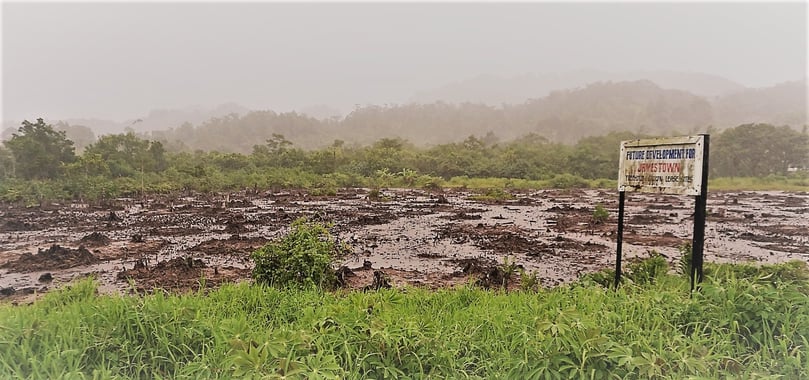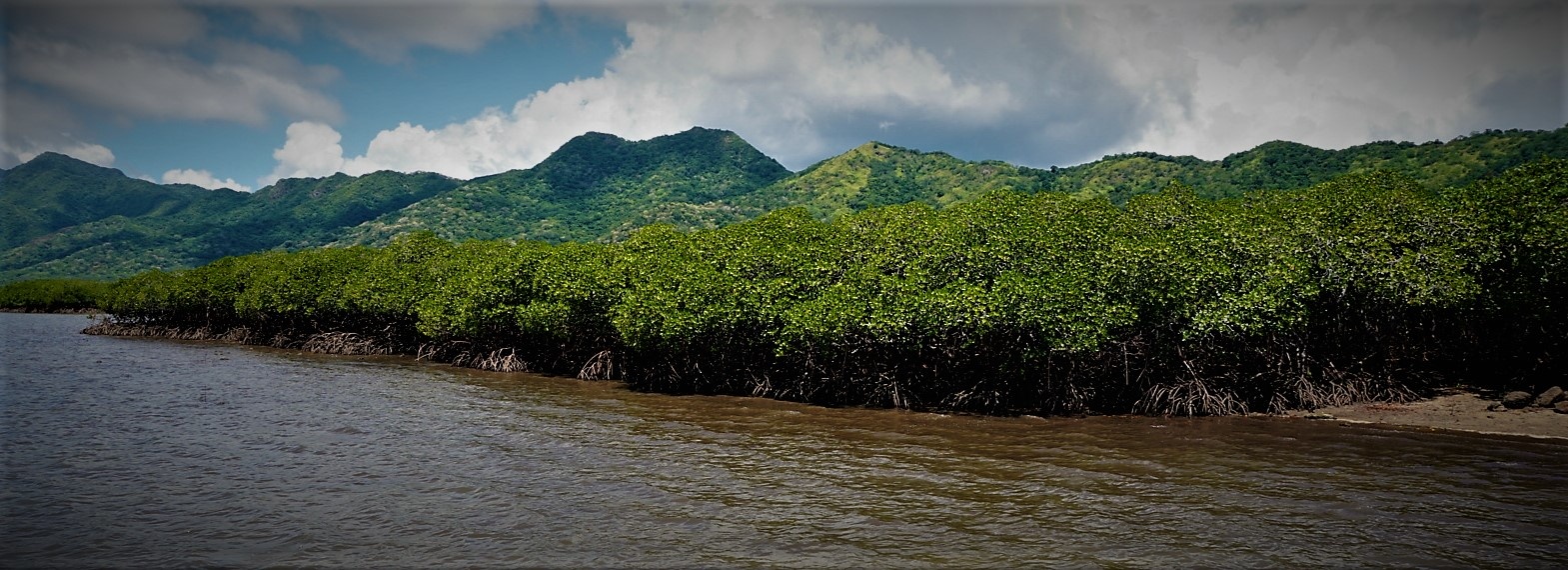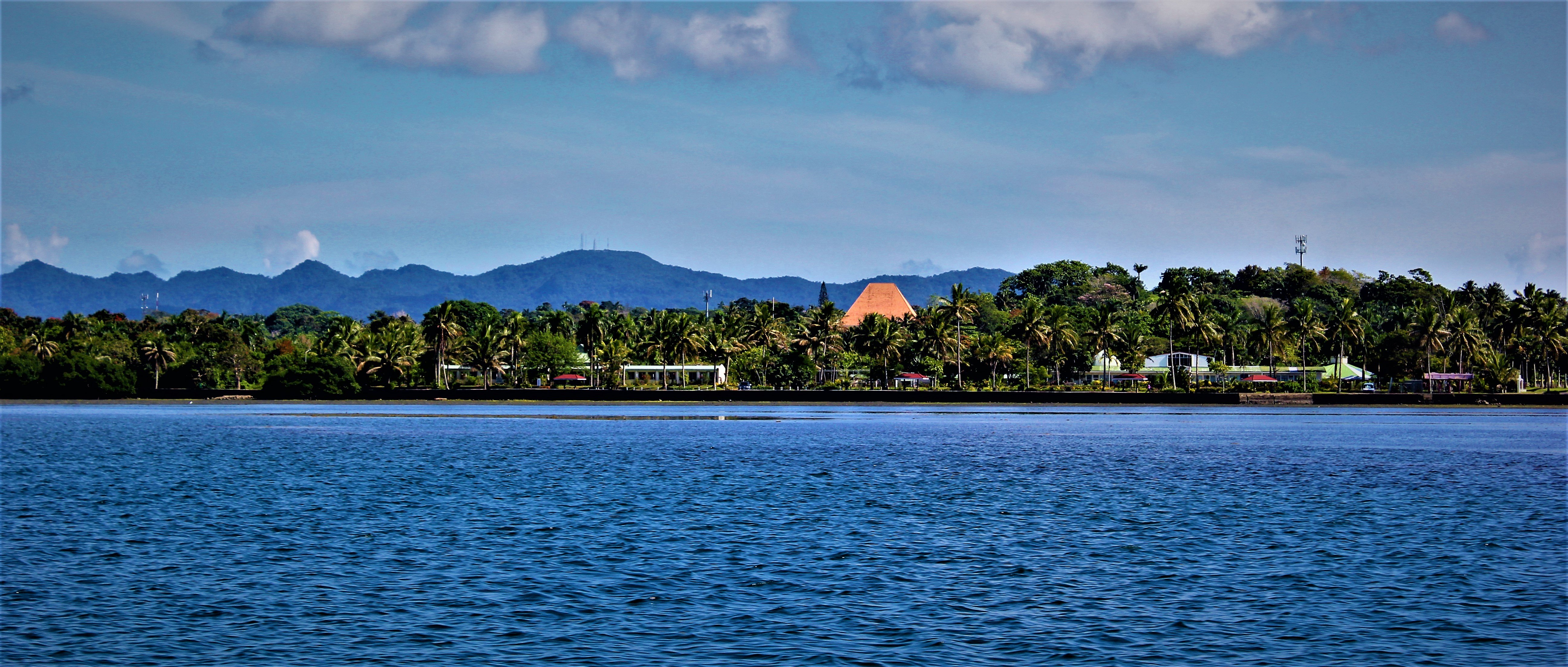Mangroves, like the ocean and the reefs, surround or should surround Fiji. They are a hardy species that inhabits the intertidal zone, on State “land”, and if they are left alone or lightly managed they regenerate. Despite the many benefits that accompany mangroves, they are vulnerable in the face of development pressures including pollution, and their fate rests in the hands of our decision makers.
Mangroves and development is a topical issue that concerns many in Fiji. For example at the recent Parliamentary Speaker’s Debate held in Suva on 1 February 2017, the Honourable Minister for Fisheries, Mr Semi Koroilavesau noted the importance of mangrove stands and stated that he is considering a recommendation that any coastal development in Fiji must include preservation of mangrove. The Honourable Minister was responding to a question from a concerned citizen who had noted to her despair that there had been a recent increase in clearing of Fiji’s mangrove stands for development purposes.
In this legal bulletin, we briefly consider how Fiji law protects mangroves, who in Fiji’s complex governance system decides whether they should be cleared in the face of development and consider ways to improve decision-making in relation to mangroves which should follow an approach that involves multiple government agencies and views from various stakeholders.
Fiji is blessed with some 38,000 hectares of mangrove making it one of the most abundant stands in the Pacific region. Among their many benefits, mangroves provide nurseries for fish and other marine species, shelter and protection from storms, reduce coastal erosion, provide a filtering function for cleaning seawater by processing sewage, and provide resources that are essential to food security for Fijian people and communities.
There are 3 government agencies involved in the regulation of mangroves and these include: the Ministry of Lands and Mineral Resources; the Ministry of Forests; and the Ministry of Local Government, housing and Environment along with their relevant departments.
The Ministry of Lands and the Ministry of Forests both have an important role to play in connection with mangroves and their protection. The Department of Lands within the Ministry of Lands has regulatory jurisdiction over all State land in Fiji, and the foreshore including intertidal zones fall into this category. State land can only be leased and not sold, and the decision to grant a lease is made by the Department of Lands following a legal process. The Ministry of Forests has the power to declare forest reserves over mangrove areas on State land and once declared a forest reserve, amongst other things, any extraction or felling of the mangrove within the declared reserve would require a specific licence from the Ministry of Forests.
However, in relation to a development proposal that would clear or destroy mangrove, the key agency to determine what the impact of the proposal is the Department of Environment, and specifically the EIA Administrator or Director of Environment. But in undertaking its role the Department of Environment should involve other relevant government agencies and wider stakeholders.
The Department of Environment within the Ministry of Local Government, housing and Environment, has a responsibility to implement the provisions of the Environment Management Act, 2005 (EMA), and one of EMA’s purposes is to “apply the principles of sustainable use and development of natural resources”. Amongst other things, EMA binds the government and contemplates and obliges a number of decision-makers which it refers to as “approving authorities” to apply EMA’s provisions when determining whether a development proposal should proceed when they are required to make a decision in relation to it. Approving authorities are defined by EMA and they include any public authority or person authorised by law to approve a development proposal.
EMA controls development proposals through an environment impact assessment (EIA) process which aims to identify the environmental, social and economic impacts of the development. In essence the EIA process and the EIA report are intended to assist decision makers make informed decisions by providing more information about the likely impacts or effects of the development on the environment, identify ways in which the impact can be mitigated or reduced, ensure decisions comply with the principles of EMA and allow for a transparent and consultative process where those who could be adversely affected by the development proposal, and interested stakeholders including other government departments and CSOs can have their say.
While not every development proposal in Fiji requires an EIA, any development proposal that involves the clearing of a mangrove stand for coastal development is very likely to require an EIA process and final approval of the EIA report by the EIA Administrator or the Director of Environment within the Department of Environment.
Schedule 2 to EMA records when a development proposal must be approved by the EIA Administrator and this includes proposals that could result in: erosion of any coast, coastline, beach or foreshore; the pollution of any marine waters; altering tidal action, wave action, currents or other natural processes of the sea, including but not limited to reclamation of the sea; the depletion of sea turtles or fish. In addition, any development proposal that could harm or destroy a proposed or designated mangrove conservation area or a proposal that could destroy or damage a mangrove swamp must also be approved by the EIA Administrator.
Before the EIA Administrator can make a final recommendation it is the responsibility of the EIA Administrator to follow an EIA process that amongst other things, includes: the preparation of an EIA report that is compliant with the process requirements of EMA and a review of the EIA report by a review committee or an independent consultant. At this review stage, the proponent of the development may be required to invite public comments at the proponent’s costs and members of the public have a legal right to inspect and view an EIA report within 21 days after it is submitted to the EIA Administrator. As part of its role in the review, the EIA report the EIA Administrator can request others to review and comment on the EIA report. This is significant because at this stage any other Ministry, department, statutory authority, local authority, the proponent or any other person can be asked to submit comments in writing. Additionally, the EIA Administrator can request more information or undertake further technical study and set up a technical advisory committee to assist in the review of the EIA report.
In making the final decision to approve or reject the EIA report the EIA Administrator may approve with or without conditions, recommend additional study or not approve the report. Further if approved, the EIA Administrator can require a cash bond be deposited as security to cover the probable cost of preventing or mitigating any environmental damage to the area or its surroundings.
While EMA provides that anyone who disagrees with the EIA Administrator’s decision has a right to appeal to the Environmental Tribunal within 21 days, unfortunately at present, Fiji has not established this Tribunal.
However, in all of this, it is important not to lose sight of the fact that Fiji is a common law jurisdiction and ultimately the High Court of Fiji has jurisdiction and oversight over the decision making processes of Fiji’s government agencies in relation to development proposals that could damage or adversely affect mangroves. Fiji’s independent judiciary are concerned with applying established common law decision-making principles and these include natural justice and due process, as well as concern that Fiji’s statutory authorities and government agencies like the Department of Environment follow the processes set out in EMA. This means that the Department of Environment cannot depart from or fail to meet the minimum requirements set out in EMA, but in some respects it would be well advised to go further to ensure that a fair and transparent process is followed because a fundamental principle relating to due process and natural justice means providing a full and fair opportunity for those who may be adversely affected by the development proposal to have their say.
In terms of fair process, in the context of developments that will adversely affect mangroves, it will be important to include customary fishing rights holders, fishing communities, the other relevant government Ministries, and in particular the Minister for Fisheries and Minister for Forests. Indeed, EMA expressly contemplates and requires seeking the views of other Ministries at the stage that the EIA report is produced, and following this integrated approach and seeking comments from these other Ministries will improve the quality of the final decision. Given the importance of mangroves in times of natural disaster both as a buffer, a potential safe haven for fishing equipment, and as a food source, it seems sensible to consult with the National Disaster Management Office as well.
It should also be noted that section 34 of EMA requires a public hearing to be conducted by the proposed developer once the preparation of the EIA assessment is completed, and this public hearing must be conducted within the vicinity of the area of the proposed development. This provides further opportunity for consultation.
In this law and governance context the Honourable Minister for Fisheries response to the question from a concerned citizen that he is proposing further guidelines for developments is a welcomed development and the adoption of carefully considered guidelines may provide greater clarity to developers, to government agencies and to the EIA Administrator as well as concerned citizens about what may or may not be acceptable in relation to mangroves. This approach is not without precedent as in November 2012, the Ministry of Lands and Mineral Resources announced that developments that involved the destruction of mangroves would be put on hold until Fiji’s Mangrove Management Plan could be reviewed and finalised. At the date of writing, Fiji's Mangrove Management Plan has not been updated, and as such Fiji still has its Mangrove Management Plan 1985. An updated Mangrove Management plan would contain relevant considerations, take into account the introduction of EMA, and assist with good decision-making.
However, ultimately, for coastal developments the decision of whether to approve the development rests with the relevant approving authority whether it be the Ministry of Lands, Ministry of Forests or relevant local authority. While the approving authority will assess development proposals on a case by case basis, it will be heavily reliant on the recommendations in the EIA report. A careful, considered EIA report based on a participatory and inclusive process, and relevant considerations like nationally adopted guidelines, the best available economic information available and the pre-cautionary principle, is a powerful tool to assist our decision-makers make good decisions that balance development with protection of the environment and valuable natural resources.
In terms of Fiji’s mangroves EIA reports, provided they are done well, will assist in good decisions that enable development to fit around one of Fiji’s most valuable natural resources.

With thanks to the Fiji Environmental Law Association (www.fela.org.fj) for its review of a draft of this bulletin.
Please note:
This legal bulletin is provided for general information purposes only and it is not, and should not be relied on as, legal advice.



